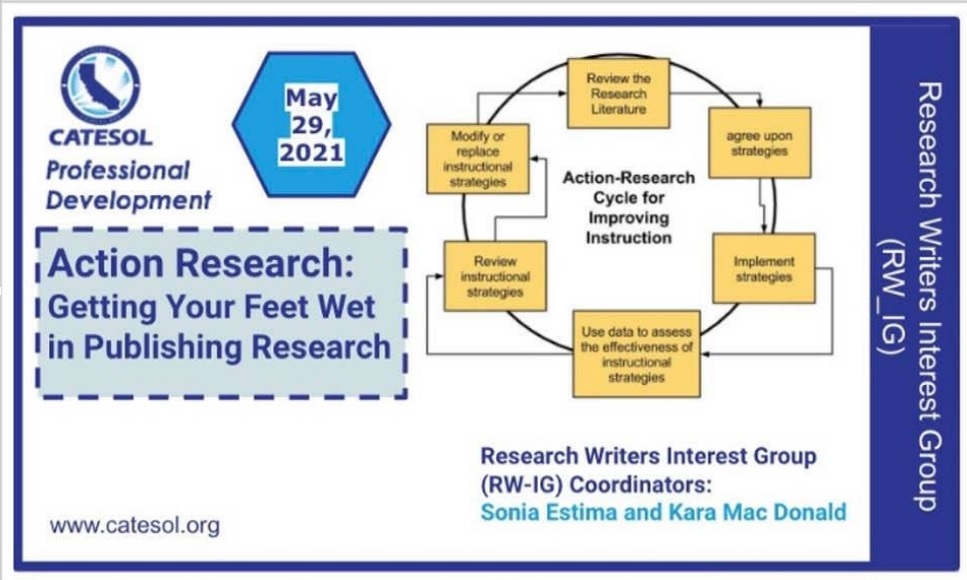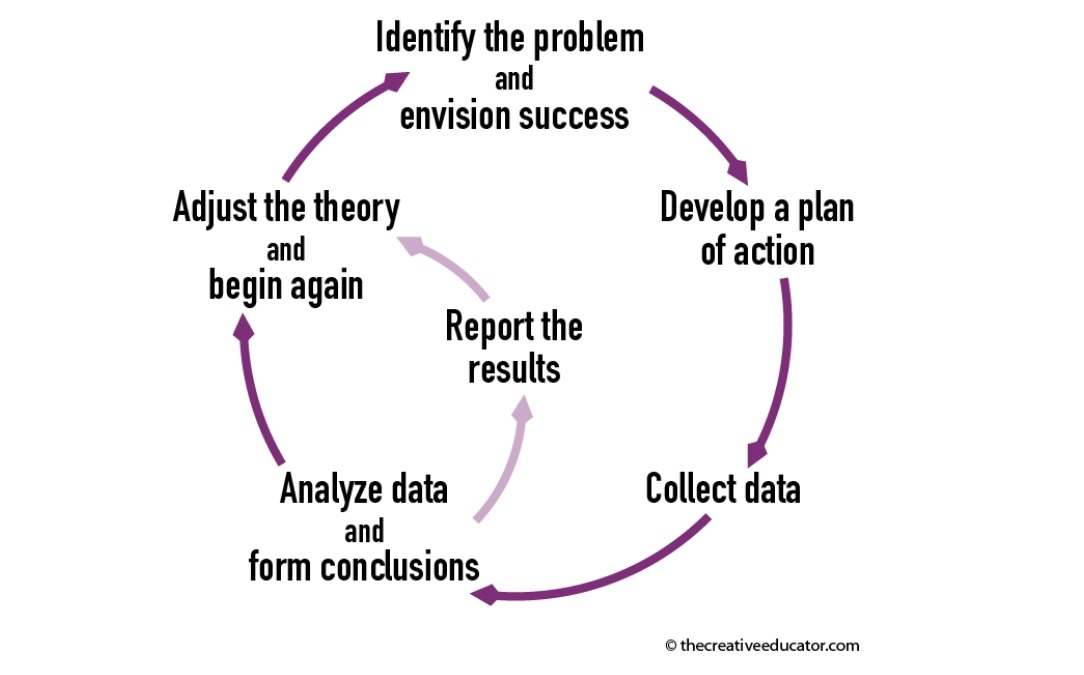Michelle Skowbo
RW-IG Webinar Report: Action Research; Getting Your Feet Wet in Academic Publications
Sonia Estima & Kara Mac Donald

Introduction
Many teachers would like to publish their work but may not have sufficient experience to navigate the process independently. Other teachers may not yet be familiar with how to carry out a large-scale research project and write it up for publication. However, teachers are constantly engaging in reflective practice and further formalizing reflective practice into action research is an accessible way to improve instructional practice and enter the world of academic research publishing. The webinar is one in a series offered by the Research Writers Interest Group (RW-IG) to introduce CATESOL members to what action research consists of and how it can be drafted for publication.
Part I: What is Action Research
Action Research is a systematic process where teachers investigate their own classroom practice using research methods and looking for ways to improve their teaching.
“In action research, it is the teacher who collects information to investigate the topic, and the teacher who interprets and judges the research results... .The teacher is at the center of action research.” (Gay & Airasian; p. 593)
The process of undertaking Action Research is often viewed as a cycle shown in the graph below:

Image source: https://creativeeducator.tech4learning.com/v07/articles/Embracing_Action_Research
The starting point for most action research is often a problem or an issue identified by a teacher in his or her classroom. This problem then becomes the research question the teacher sets out to investigate by trying out different actions. Based on the question, the instructor researches the current literature on the topic to see what others are saying and what others have done to address this issue, and then formulates an action plan to be tried in the classroom. The teacher-researcher will then implement the new action and collect data on what was done and the results obtained. The data collected is analyzed to form conclusions and recommendations that will often result in adjustments or modifications that will in turn start the process over again.
Action Research can be a great way for teachers to: (a) develop new knowledge directly related to their classroom, (b) engage in reflective teaching and thinking, (c) expand their pedagogical repertoire, (d) learn new ideas and best practices, and (e) take charge of their craft (Hine, 2013). Undertaking Action Research as a regular and ongoing practice is a great way for teachers to become active agents of their own continuous learning and development.
Part II: How Action Research Can be Written Up as a Manuscript
The road to academic publication has several obstacles. Many faculty would like to publish their work, but may not have sufficient experience to navigate the process independently. For others, setting aside time to write can be challenging. These issues are compounded by the fact that writing is typically an activity done in isolation. The second half of the webinar offered suggestions on how action research projects can be written up whether through traditional full-length research articles, practice-based articles, newsletter columns, or blog posts based on the targeted publication and its audience. The objective of this section of the webinar was to allow attendees to see that if they are not yet ready to write and submit a full-length research article for review for publication, they can get their feet wet and find their voices as authors by writing practitioner-oriented pieces that are shorter and go through a less rigorous review process.
In this way they can come to navigate the world of academic publication.
What’s Next
The next RW-IG webinar will be a virtual workshop to be held in the summer that provides attendees with the opportunity to examine sample action research manuscripts that have been written for different audiences and in different formats. The facilitators will coach faculty through interactive, collaborative, and individualized support in identifying key elements of the manuscripts. The session will close with discussions with attendees on the topics they would like to address in drafting up their action research for publication, for example: developing existing ideas and topics, polishing a research question statement, organizing content, citing sources, or connecting related resources. Keep an eye out for more information on this summer webinar event.
References:
Gay, L. & Airasian, P. (2000). Educational Research: Competencies for Analysis and
Application. 6th Ed. Prentice Hall, Inc.
Hine, G. (2013). The importance of action research in teacher education programs. Issues in Educational Research, 23(2).